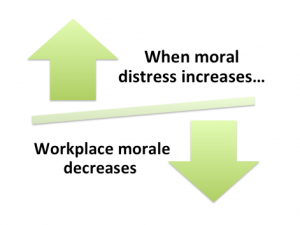 Jeanine Doherty, Au.D., M.Phil., M.B.S, B.Soc.Sci.(Hons.),
Jeanine Doherty, Au.D., M.Phil., M.B.S, B.Soc.Sci.(Hons.),
Christchurch, New Zealand
Trying to live up to a philosophical ideal of increasing the social, psychological, cultural and ethical sensitivity of our human encounters requires our personal, deliberate effort in an ongoing process. The action requires reflection, experience, introspection and the development of emotional quotient (EQ). It is not possible to complete a course about Patient-Centered Care (PCC) and think “Hey I can write on ‘Linked in’ now that I am a PCC clinician,” nor is it something that clinic owners should believe is ‘ticked off’ by sending their staff to a course.
While PCC is not yet fully conceptualised within audiology (although some essays on the topic are available), as Stewart (2001) wrote, we do know that PCC is not technology centred, not practitioner centred, not clinic centred and not disease centred. I believe PCC has to be lived in like it is your 2nd skin – our “thermals” as we would wear in a chilly southern New Zealand winter. PCC has to be infused, like ethics awareness, into all aspects of student training, as well as within the modus operandi of any practice arena.
Ethics, Legality, Morality
 As we know, ethics, legality and morality are each different, though related, constructs. Something can be legal, yet immoral to an individual, as our values lead to our personal morals. Moral distress arises when clinicians are unable to act according to their moral judgement and their Profession’s Ethical Code (Rodney, 2017). This distress is located not only within individuals when their actions mismatch their values, but also from within the broader healthcare structures of the clinician’s workplace. The socio-political structures that can create moral/ethical distress have been studied mostly within nursing, but the relevance of the concept to audiology should not be ignored. Moral distress also emerges from situations that are against all the principles of PCC.
As we know, ethics, legality and morality are each different, though related, constructs. Something can be legal, yet immoral to an individual, as our values lead to our personal morals. Moral distress arises when clinicians are unable to act according to their moral judgement and their Profession’s Ethical Code (Rodney, 2017). This distress is located not only within individuals when their actions mismatch their values, but also from within the broader healthcare structures of the clinician’s workplace. The socio-political structures that can create moral/ethical distress have been studied mostly within nursing, but the relevance of the concept to audiology should not be ignored. Moral distress also emerges from situations that are against all the principles of PCC.
 Harris and Griffin (2015) write that some organisational policies can lead to diminished care quality and cynicism with lack of teamwork and lower morale amongst clinical staff. In such a work-place, increased competition and mistrust develops between staff, while middle management level finds itself stuck between demands from higher-up levels (e.g. profit/cost outcomes) and the lack of teamwork and lower morale of the clinicians who are in moral distress. The physiological and psychological effects caused by the existence of moral distress can lead to burn-out, and then the staff member becomes ill, finds another better workplace, or just gives in, morally disengages, and carries on in a manner that is opposed to their values/morals (Musto, Rodney & Vanderheide, 2015). Lachman’s (2016) list of symptoms of burnout includes fatigue, general illness, headaches, insomnia, disillusionment, anger, negative self-concept and a loss of concern for others.
Harris and Griffin (2015) write that some organisational policies can lead to diminished care quality and cynicism with lack of teamwork and lower morale amongst clinical staff. In such a work-place, increased competition and mistrust develops between staff, while middle management level finds itself stuck between demands from higher-up levels (e.g. profit/cost outcomes) and the lack of teamwork and lower morale of the clinicians who are in moral distress. The physiological and psychological effects caused by the existence of moral distress can lead to burn-out, and then the staff member becomes ill, finds another better workplace, or just gives in, morally disengages, and carries on in a manner that is opposed to their values/morals (Musto, Rodney & Vanderheide, 2015). Lachman’s (2016) list of symptoms of burnout includes fatigue, general illness, headaches, insomnia, disillusionment, anger, negative self-concept and a loss of concern for others.
Profit vs Patient Outcomes

Losing sight of our professional focus
Increasingly reductionist demands for cost-effective and efficient healthcare results in imbalance, and increases the potential for conflicts of personal, professional and corporate values. In a system of ‘for-profit’ health care, the opportunities for patient manipulation and exploitation are endless, and the entry of vertical integration of the care (e.g., in the USA surgeons owning hospitals or dialysis centres) has not lowered prices or improved services,and this is due to the conflict of the ownership also having a shareholder expectation of profit growth (Andre & Velasquez, 1988). This conflict must be relevant to hearing aid service delivery as well, with hearing aid manufacturers owning hearing aid dispensing clinics and for any clinics incentivising their audiologists to sell – which can then lead to pressures to upsell and oversell, pressure felt within the audiologist personally to earn more, and/or by pressure from employers to do the same.
Andre and Velasquez (1988) add that institutions/corporations driven by fiscal and other non-health related issues can even manipulate clinician viewpoints by means such as incentivising positive corporate news like profit or sales growth, while ignoring or penalising negative outcomes in areas such as patient satisfaction. They can also adopt, as standard, approaches and methods that have no proper regard to patient outcomes. Have patients benefitted from the economies of scale that large for-profit service delivery should be able to make from centralising financing and management? Or does the corporate merely swallow the profit or spend it all on aggressive marketing like advertisement bombardments or cold-calling by call centre staff incentivised to “convert” respondents to appointments?

Responding to challenge with resilience
Summary
As a Profession, we must not allow important, yet fragile, virtues and ideals to be extinguished by the self-interest that drives any “for-profit” enterprise (Andre & Velasquez, 1988).There is a negative correlation (p < .001) between the existence of moral distress and workplace climates rated as ethical (Whitehead, et al., 2015).
Clinician Audiologists should not view themselves as victims of moral distress but rather as moral agents capable of responding positively and with moral resilience to the challenges they face personally and at an organisational level. Politically we should foster fair processes and intentionally cultivate our practice environments to become moral communities (Rodney, 2017) and become places where ethical values, like PCC, can drive our practice.
PCC enhances patient care, and that leads to better clinician satisfaction as there is less chance of moral distress. This results in better staff retention and so means less cost to employers – it seems a win-win-win scenario to me.
REFERENCES
Andre, C. & Velasquez, M. (1988). A healthy bottom line: profits or people? Issues in Ethics, 1(4).
Harris, C. & Griffin, M.T. (2015). Nursing on empty: compassion fatigue signs, symptoms, and system interventions. Journal of Christian Nursing, 32(2), 80-87.
Lachman, V.D. (2016). Compassion fatigue as a threat to ethical practice: identification, personal and workplace/management strategies. Ethics, Law, and Policy, 25(4), 275-278.
Musto, L.C., Rodney, P.A. & Vanderheide, R. (2015). Toward interventions to address moral distress: navigating structure and agency. Nursing Ethics, 22(1), 91-102.
Rodney, P.A. (2017). What we know about moral distress. American Journal of Nursing, 117(2), S7-S10.
Whitehead, P.B., Herbertson, R.K., Hamric, A.B., Epstein, E.G. & Fisher, J.M. (2015). Moral distress among healthcare professionals: report of an institution-wide survey. Journal of Nursing Scholarship, 47(2), 117-125.
